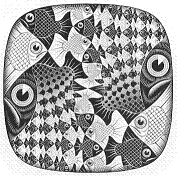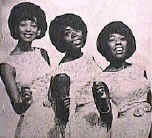continued
Exhibit A:
A science vulgarizer in today’s New York Times–
“Somewhere out there, more elusive than a snow leopard, more vaunted in its imagined cultural oomph than an Oprah book blurb, is the Science Movie.
You know, the film that finally does for science and scientists what ‘The Godfather’ did for crime and what ‘The West Wing’ did for politics, accurately reproducing the grandeur and grit of science while ushering its practitioners into the ranks of coolness.”
Exhibit B:
John Updike’s review in the May 22 New Yorker of a new novel by Michel Houellebecq, The Possibility of an Island—
“Nor is Houellebecq…. entirely without literary virtue. His four novels– Whatever (1994), The Elementary Particles (1998), and Platform (2001) are the three others– display a grasp of science and mathematics beyond that of all but a few non-genre novelists.”
A character in the new novel– “a lengthy exercise in futuristic science fiction”– writes that
“The dream of all men is to meet little sluts who are innocent but ready for all forms of depravity– which is what, more or less, all teenage girls are.”
Exhibit C:
A mathematician hopes for more exciting vulgarizations of his subject–
“I would hope that clever writers might point out how mathematics is altering our lifestyles and do it in a manner that would not lead Garfield the Cat to say ‘ho hum.'”
— Philip J. Davis, “The Media and Mathematics Look at Each Other” (pdf), Notices of the American Mathematical Society, March 2006
Exhibit D:
Today’s Garfield—

Exhibit E:
Log24 entry of May 18, a parody of “Contact,” a 1997 film that vulgarized science–
“They should have
sent a poet.”

Exhibit F:
Gilbert and Sullivan, “The Mikado“–
“(With great effort) How de do, little girls, how de do? (Aside) Oh, my protoplasmal ancestor!”
Coda“It might be asking too much
to make us cool.”
— Science vulgarizer
Dennis Overbye
Robert De Niro as the
young Vito Corleone


































